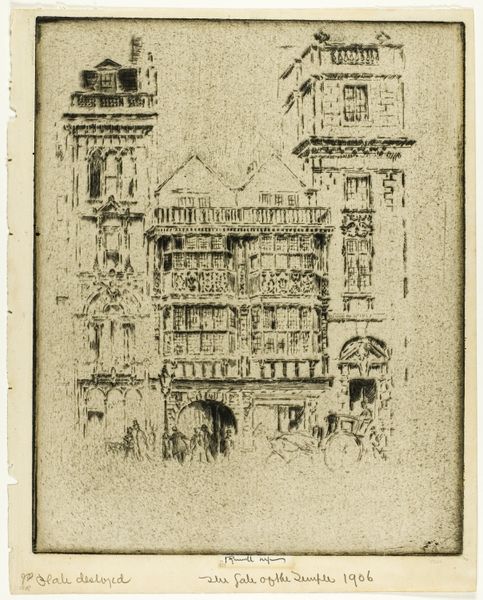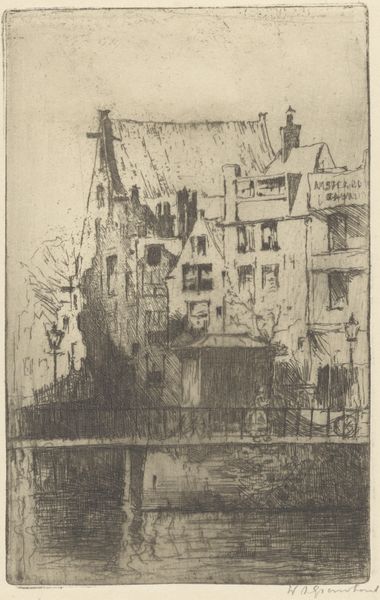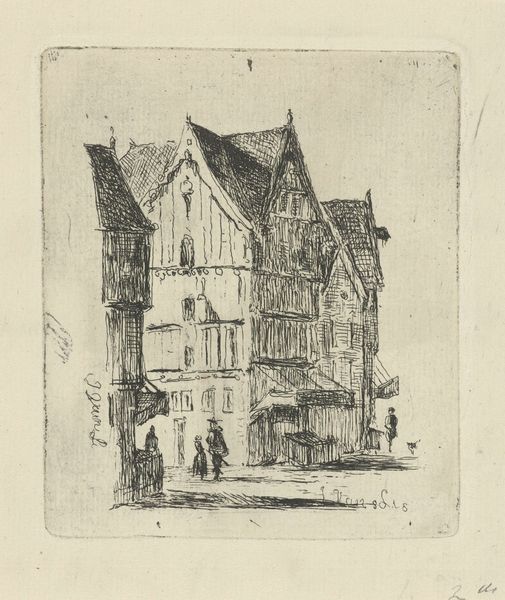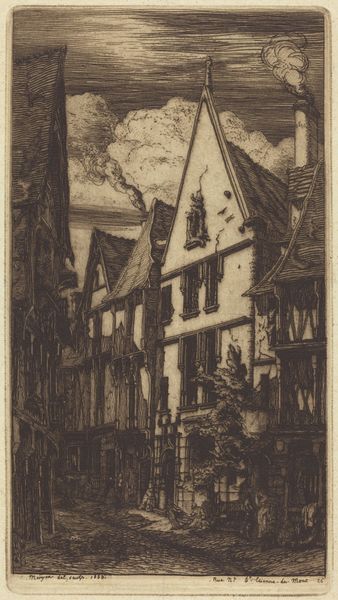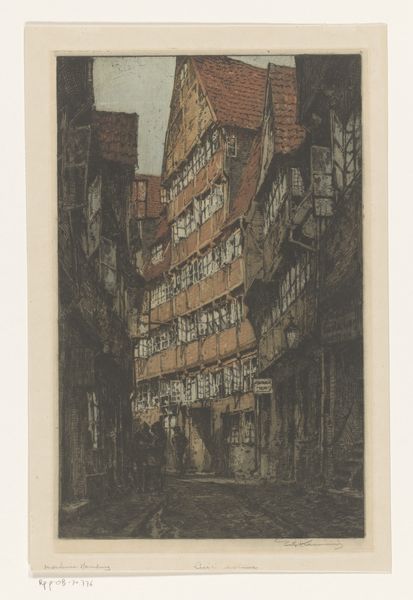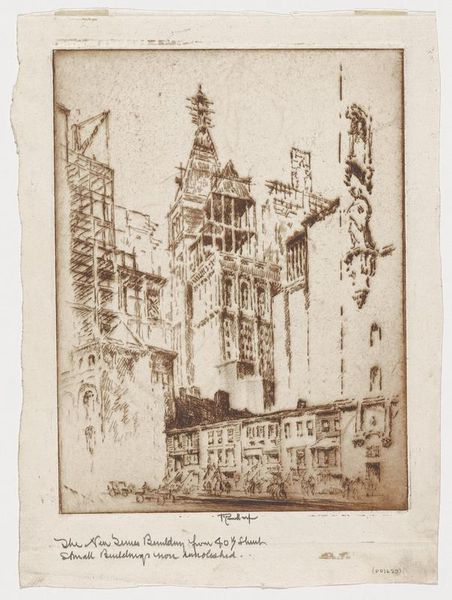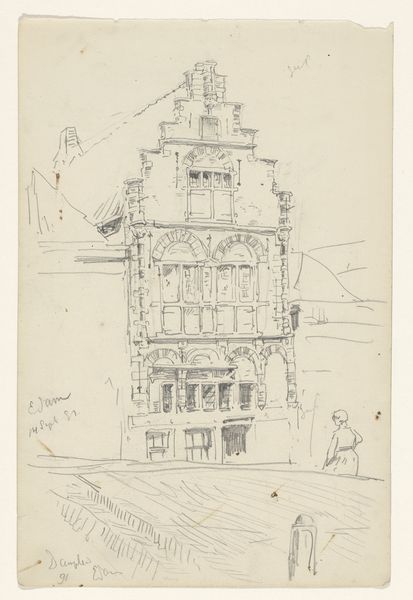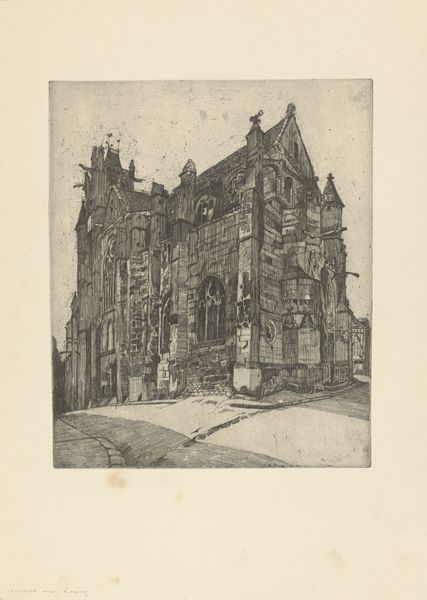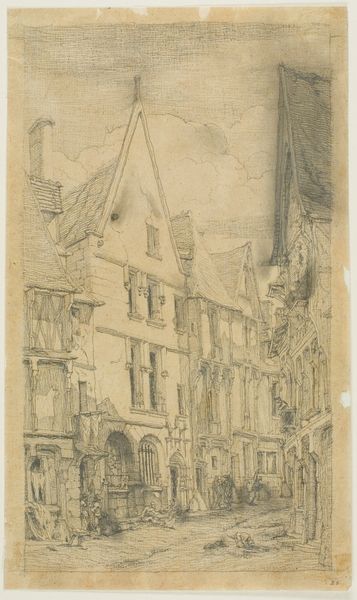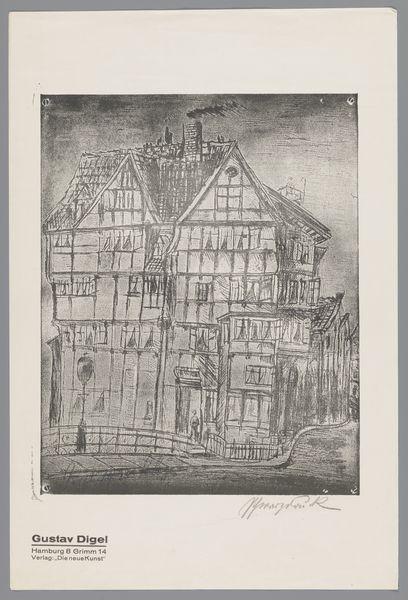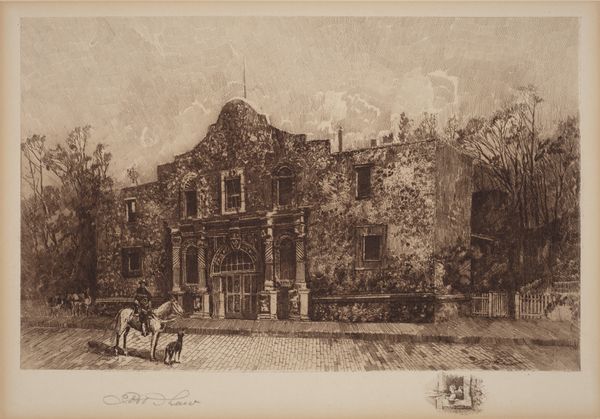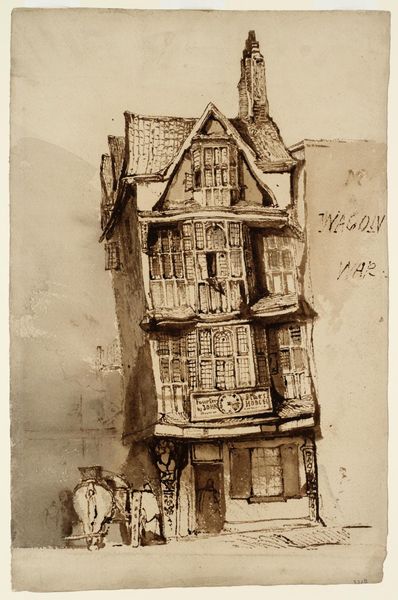
print, etching
# print
#
etching
#
landscape
#
cityscape
#
history-painting
#
realism
Dimensions: plate: 26.67 x 15.56 cm (10 1/2 x 6 1/8 in.) sheet: 34.29 x 21.27 cm (13 1/2 x 8 3/8 in.)
Copyright: National Gallery of Art: CC0 1.0
John Taylor Arms created "A Corner in Old Lisieux" using etching, a printmaking process that requires both artistry and technical skill. The image begins with a metal plate, likely copper or zinc, covered with a waxy, acid-resistant ground. The artist then scratches lines through the ground, exposing the metal, which is then submerged in acid. The acid bites into the exposed lines, creating grooves that will hold ink. Arms was renowned for his detailed and precise style, seen in the intricate lines and textures that capture the architectural nuances of the old building. This wasn't just about recording a scene. It was a labor-intensive process that mirrors the labor embedded in the medieval architecture itself. The urban environment portrayed has ties to economic and social structures of the time. The etching process, with its reliance on skilled labor, invites us to consider the value of craftsmanship, at a time when the rise of industrial production changed the nature of work. By focusing on process, materials, and context, we can fully appreciate the significance of Arms's work.
Comments
No comments
Be the first to comment and join the conversation on the ultimate creative platform.
